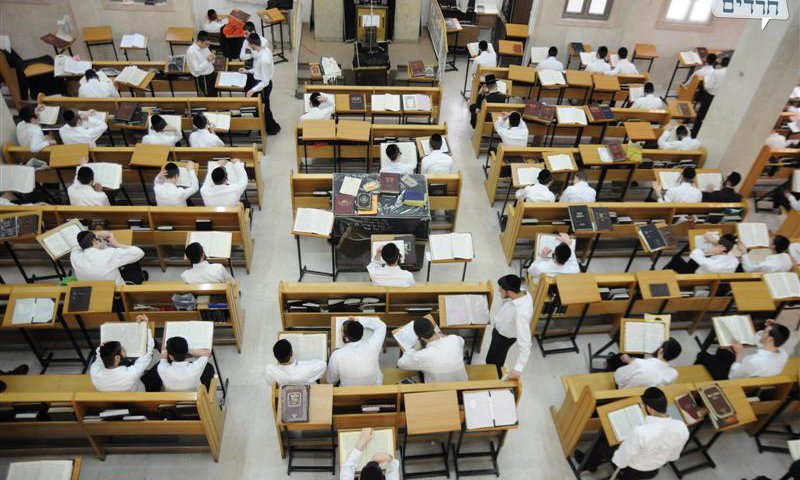
Gevald: yeshiva and kollel headquarters published harsh data
Following the expected cuts, yeshiva and kollel headquarters established • First step: to publish the harsh data and triggers • Inside: How does Finance control strict practices?
- Sari Roth, B'Chadrei Charedim
- ו' תמוז התשע"ג

מנחם הלוי
Severe cuts could cause serious damage to the Torah and yeshiva world led to the organization of a body which calls itself the yeshiva and kollel headquarters. Yesterday (Wednesday) a meeting of the directors of the Hesder yeshivas, yeshiva gedolos and kollelim was held. Conclusion of the meeting it was decided to take action and measures aimed at informing the public the grave danger of the yeshiva world.
Target audience is the public which understands the value of the Torah, in order to stimulate and support, and strengthen by those engaged in Torah.
The first step is a comprehensive publication of the data to the public to understand the nature of the difficulties which institution administration will face and act accordingly.
Yeshiva examination procedures were tightened
As we know, the yeshivas supported by the Ministry of Education receive the support relative to the number of students attending them, the number reported by the yeshiva office themselves. Adjustment to control the number reported the actual number of students studying powered by the Ministry of Finance a control system built on unannounced visits to yeshivas and count them as compared with students of the institution.
A random test in an Institution which found that the number of students reported by him, tested again, and the findings of the two tests are presented in support of the Committee of the Ministry of Education for making a decision regarding the procedures of the institution by the finance minister. Decision will determine the fate of the institution this year and sometimes years to come.
Random testing may decide the fate of the institution for reasons related to randomness. E.g.: an institution where there is full presence, but visited twice in the late afternoon may lose support because of a large deficiency, compared with an institution which has a real shortage but visited it in the morning.
Please note that other state educational institutions (universities, schools, etc.) are funded and not supported so the subject of absences does not come up on the agenda.
In the past, the control method of randomization was a problem, now with the signing of the new finance minister on the procedure it became even more problematic. The new procedure requires essentially the presence of 100% at any given time, because if found in two reviews any percent of absence, the institution will be fined in respect. Needless to say that the nature of things, an educational institution, like any other frame, you cannot have a reality of pure constant presence.
Among other data the organization publishes the following data:
1. According to the previous procedure percentage of absence of up to 15% is considered normative absence percentage and the institution which stood at this percentage of absence was not penalized. According to the new procedure, the institution meets this percentage, will be fined for those students who were absent for two consecutive reviews.
2. An institution which percentage exceeded 15%, and the second review succeeded (absence of less than 15%), according to the previous procedure did not get a penalty. The assumption is that what happened to the first control is the result of that random, for the second audit was successful. According to the new procedure it will be fined for the same percentage which wasn't in attendance during the second audit, for whatever the reason may be.
3. According to the previous procedure for the Subsidies Committee discretion to add on a percentage of absenteeism (15%) students committee was convinced absence for reasons beyond their control (medical hospitalizations, Shiva, etc..) New procedure does not leave any discretion to the Subsidies Committee, and the fines are almost automatic.
4. Fines are huge and calculated by multiplying the support by the amount of absentees by 36 or the percent of absence multiplied by supporting a full year.
5. Penalty is calculated for three years even if the institution succeeded in the reviews which were only recently.
תגובות
{{ comment.number }}.
הגב לתגובה זו
{{ comment.date_parsed }}
{{ comment.num_likes }}
{{ comment.num_dislikes }}
{{ reply.date_parsed }}
{{ reply.num_likes }}
{{ reply.num_dislikes }}



הוספת תגובה
לכתבה זו טרם התפרסמו תגובות